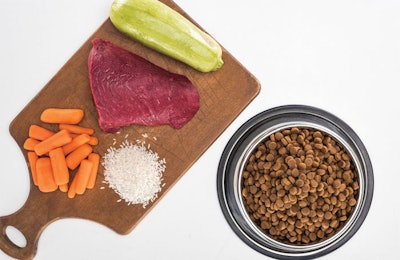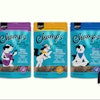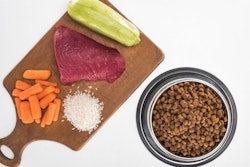
Pet food ingredient supply chains can snap, or at least get tangled, for many reasons. The COVID-19 pandemic stressed those weak links in 2020. However, pet food producers largely found ways around the supply chain disruptions caused by the early stages of the pandemic. Pet food producers and their suppliers face the ongoing potential for interruptions as various countries, such as the United Kingdom, reinstate movement restrictions. Whether because of a global health crisis, or simply a stalled delivery truck, pet food formulators may need to find ways to replace a missing ingredient while staying within labeling regulations and ensuring pet nutrition.
“As formulators, we do replacement,” Serge Boutet, animal nutrition consultant, SB Nutrinnov Consultants, said during his Petfood Essentials: CONNECT-ED educational short course. “We have to look at what we have in the house, in terms of ingredients and try to replace the missing product. Let's say we are missing a protein source, and for sure we don't want to affect the animals by changing a formula, but sometimes we're in a rush. We're in a situation where we cannot stop manufacturing. We do reformulate an ingredient with others we may have in house… If we can rearrange the formulation with available ingredients, then, we may save a lot of money to the company, while not affecting the animals.”
In his career, Boutet has seen substitution used more in livestock feed than pet food. Nevertheless, substitution works for pet food.
He gave the example of a pet food company needing a 60% protein source, but only having a 50% source. Dog, cat and other pet food makers then try to counter-balance with essentially a kind of mini-formulation to replace an ingredient, yet have minimal impact on the final product. Manufacturers, buyers and formulators need to work together to make this happen. Ultimately, if a recipe can’t be developed that will meet animal nutrition or regulatory needs, the pet food facility may need to stop production of affected products. While expensive, the fallout from recalls or lawsuits costs more in both trust and treasure.
“It can be disastrous for the plant itself, but sometimes we have to say no,” he said.
Human food ingredient substitution
Keeping food processing facilities running isn’t only important for pet food companies. Ingredient substitution helps the human food industry adapt to supply changes, perhaps more than consumers realize, he said.
“I'm always amazed looking at packaging and ingredient listing and guaranteed analysis on the human food,” he said. “When people say, ‘I would like everything to be like human food.’ For me it's kind of a nightmare. Look at the list of ingredients from the human food. They give themselves a great deal of possibilities of switching ingredients, a lot more than we are allowed in the pet industry…
“I always say to my friends, ‘you know I would sometimes eat a lot more pet foods from a company I know than some human products or some restaurants.' I don't want to judge an industry, but I think the human food industry is a lot more marketing than regulation, compared to the pet and agriculture businesses.”
Hyper-humanization may encourage pet owners to think that our own food products are always the best, he said. We think of humans as top of the food chain, and the quality too must be the top. However, he’s seen places on the human side where he would not even want to bring his pet.
















